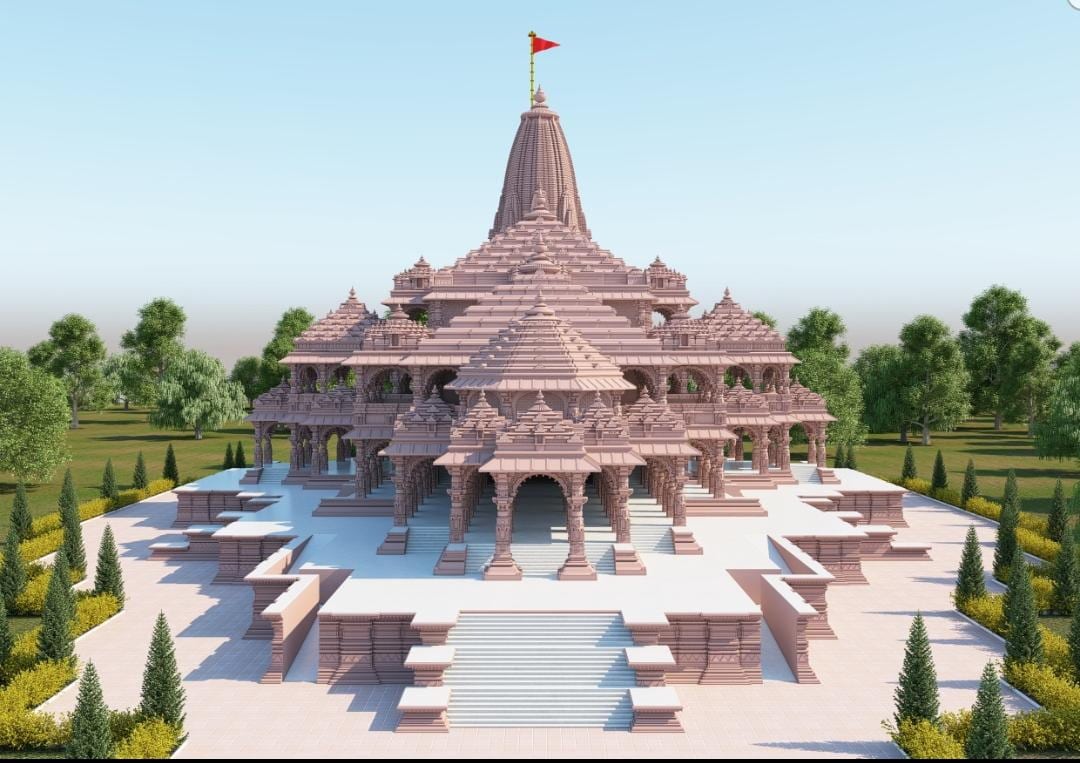Along the serene banks of the sacred Sarayu (Sharayu) River, lies the holy city of Ayodhya. It stands as a testament to India's spiritual and historical legacy. This ancient city resonates with the morals and values of a glorious past that has shaped the cultural ethos of the Indian subcontinent. Ayodhya is the birthplace of Lord Ram, the seventh incarnation of Lord Vishnu. On 22nd January 2024 is the grand inauguration of The Shri Ram Mandir. The entire nation is gearing up for the celebration of this monumental event.
The construction of the Ram Mandir in Ayodhya is not merely the building of a physical monument but a spiritual journey that connects the past, present, and future of the Indian subcontinent. The significance of Lord Ram extends beyond religious boundaries, embodying values such as righteousness, duty, and compassion. Lord Ram’s teachings continue to inspire and guide people, transcending cultural and religious divides. The Mandir is not just a place of worship; it stands as a testament to the architectural prowess and artistic heritage of India.
Showering of love on the Ram Mandir
The temple's design is in the traditional ‘Nagara’ style architecture. Several elements were sourced from all over India and Nepal. Two massive Shaligram stones from the Gandaki River in Nepal were brought for the construction of the main idols. The primary temple structure is made using the unique pink sandstones from Bharatpur, Rajasthan. Premium teakwood for intricate wooden carvings and gold details is sourced from Maharashtra. Telangana and Karnataka have been sources for the granite elements, flooring is from Madhya Pradesh, brassware is brought in from Uttar Pradesh, and the 42 bells that were essential for the rituals have been sourced from Tamil Nadu.
The list of contributions is endless and every corner of this incredible country has contributed their share to this monument. Every state has contributed something significant to their "Ram Lalla". Also, the international community has been actively involved in sending gifts and showering their love on this historic mandir.
Ram Mandir generating employment
The construction of the Ram Mandir has provided employment opportunities for skilled artisans and craftsmen. These skilled artisans working on making the temple the spectacle that it is are from across India. This is an excellent example of how a country gears up and gives it all to a cause that is dear to its heart. The temple complex is not only a spiritual hub but also a living example of India's commitment to preserving its cultural heritage.
Ram Mandir set to transform Ayodhya
The Ram Mandir is set to become a major pilgrimage and tourism destination, attracting devotees from across the country and around the world. This influx of devotees will undoubtedly assist the growth and flourishing of local businesses, leading to economic growth and development in Ayodhya and the surrounding regions. The tourism potential of the temple is not limited to religious travellers; it also attracts art enthusiasts, historians, and those seeking a glimpse into India's vibrant culture.
The grand inauguration of the Ram Mandir is a momentous occasion that brings together people from all walks of life. The ceremony, marked by religious rituals, and spiritual discourses, symbolizes unity and harmony.
A cultural renaissance
The opening of the Ram Mandir in Ayodhya is a cultural renaissance for India. It is a reminder of the nation's ability to preserve its ancient wisdom while embracing modernity. As the temple gates open, they usher our Incredible India into an era where spirituality, culture, and tourism blend perfectly inviting the world to witness the magnificence of Ayodhya and the legacy of Lord Ram.











































Post your Comment
Please let us know your thoughts on this story by leaving a comment.